How Soft Corals Weaponize Their Symbiotic Algae
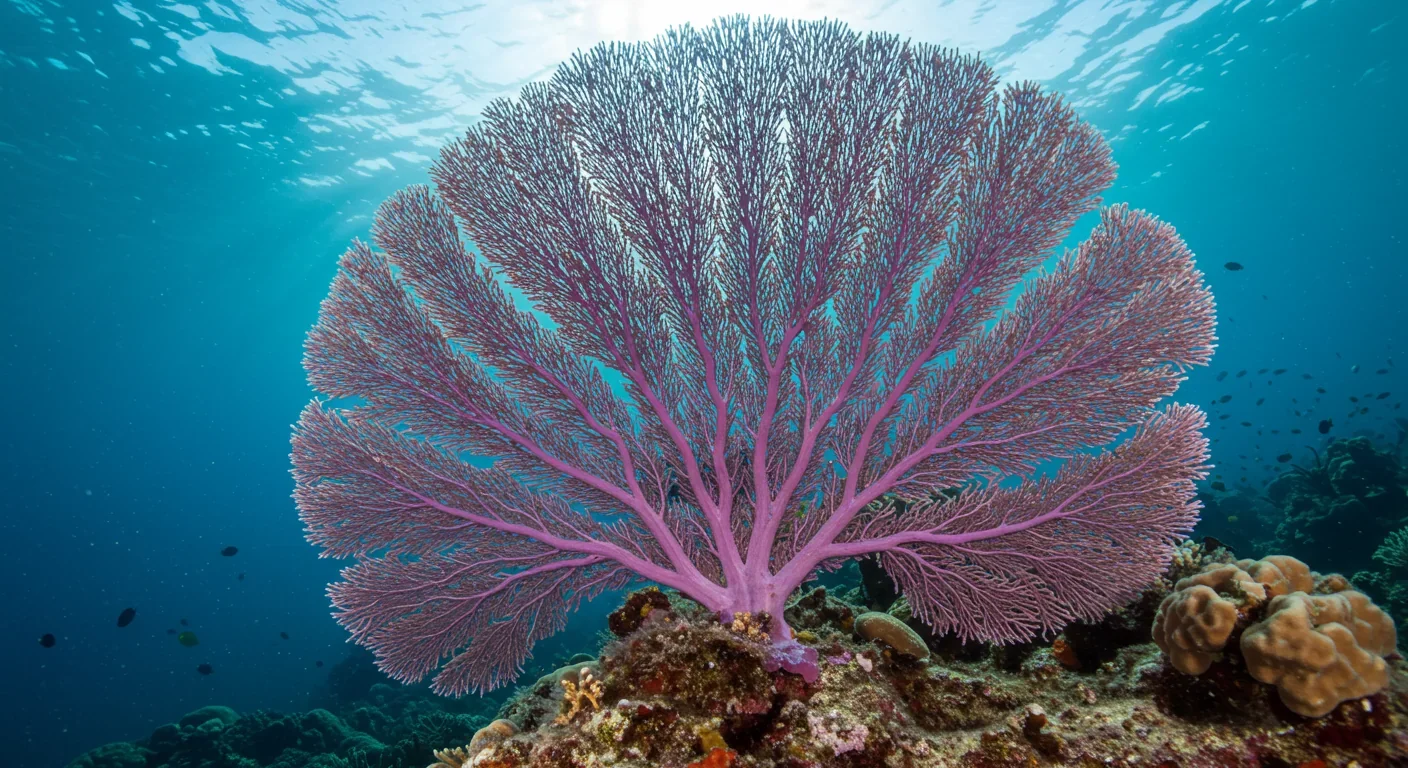
TL;DR: Fungi engineered Earth's first soils a billion years ago, partnered with plants to enable terrestrial life, and now connect entire forests through underground networks. They're ecosystem architects we're only beginning to understand.
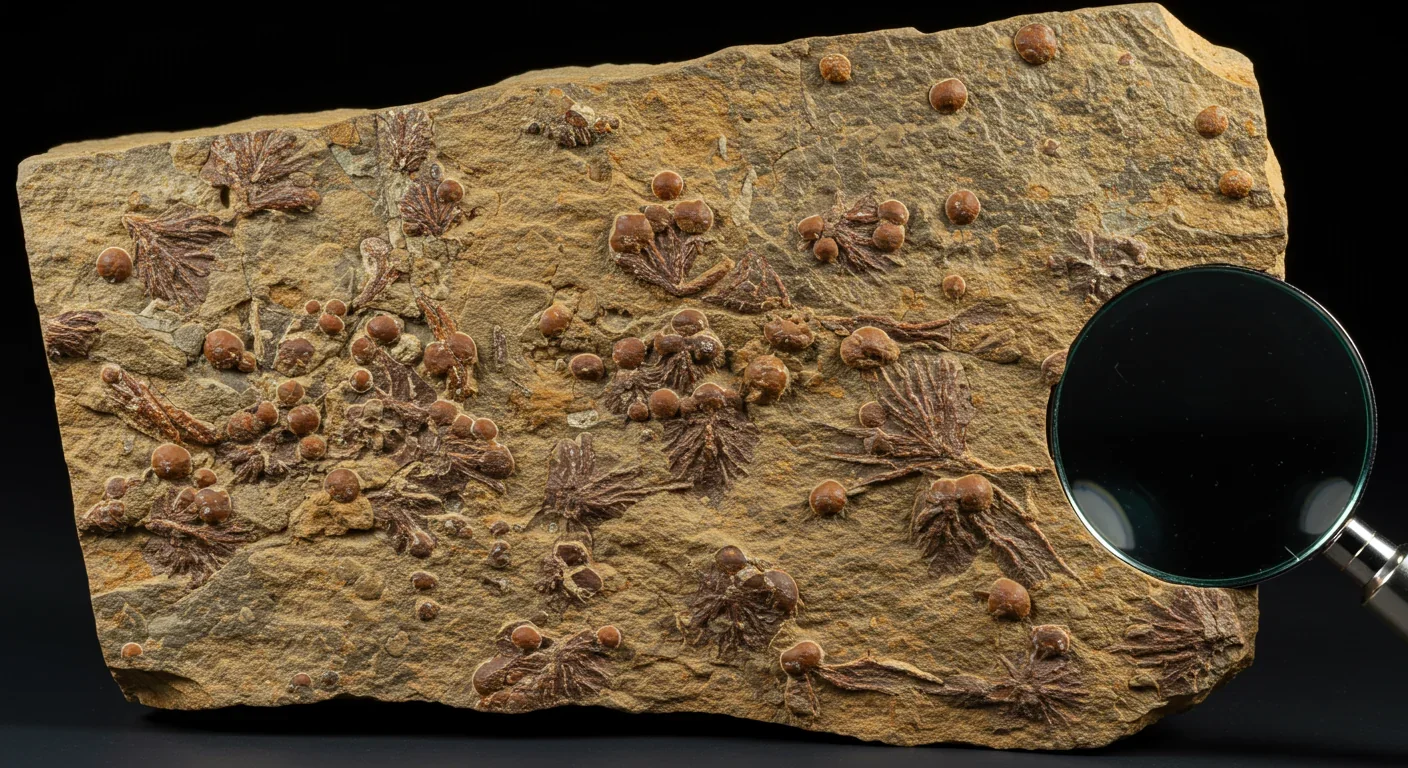
Long before the first tree spread its branches, before dinosaurs walked the Earth, even before plants dared venture onto dry land, fungi were already here. They weren't just passengers on evolution's journey—they were engineering the very foundations that made complex life possible.
New fossil discoveries are rewriting what we thought we knew about these remarkable organisms. Scientists recently found fungal spores and hyphae dating back one billion years, doubling the age of the oldest known fungi. These ancient microbes didn't wait around for ecosystems to form. They built them.
Picture Earth 1.5 billion years ago. Barren rock, toxic atmosphere, no soil as we'd recognize it today. Then fungi arrived and started breaking things down—literally. Their threadlike hyphae wormed into mineral-rich rocks, secreting acids that dissolved stone into the first primitive soils.
This wasn't random decomposition. Paleomycology reveals fungi actively weathered rocks in ancient estuaries where no plants existed, preparing terrestrial habitats for the invasion to come. They spent hundreds of millions of years engineering environments that would eventually welcome their future partners: plants.
Fungi laid groundwork for hundreds of millions of years before plants could use it—the ultimate long game in evolution's strategy.
The patience of evolution is staggering. Fungi laid groundwork for eons before plants could use it. When the Silurian-Devonian Terrestrial Revolution finally arrived 428 million years ago, fungi didn't step aside—they dominated. Giant fungal towers like Prototaxites stood over 20 feet tall, the largest organisms on land, while early plants were still ankle-high.
Think about that. The biggest thing alive on continents wasn't a tree or fern. It was a mushroom.
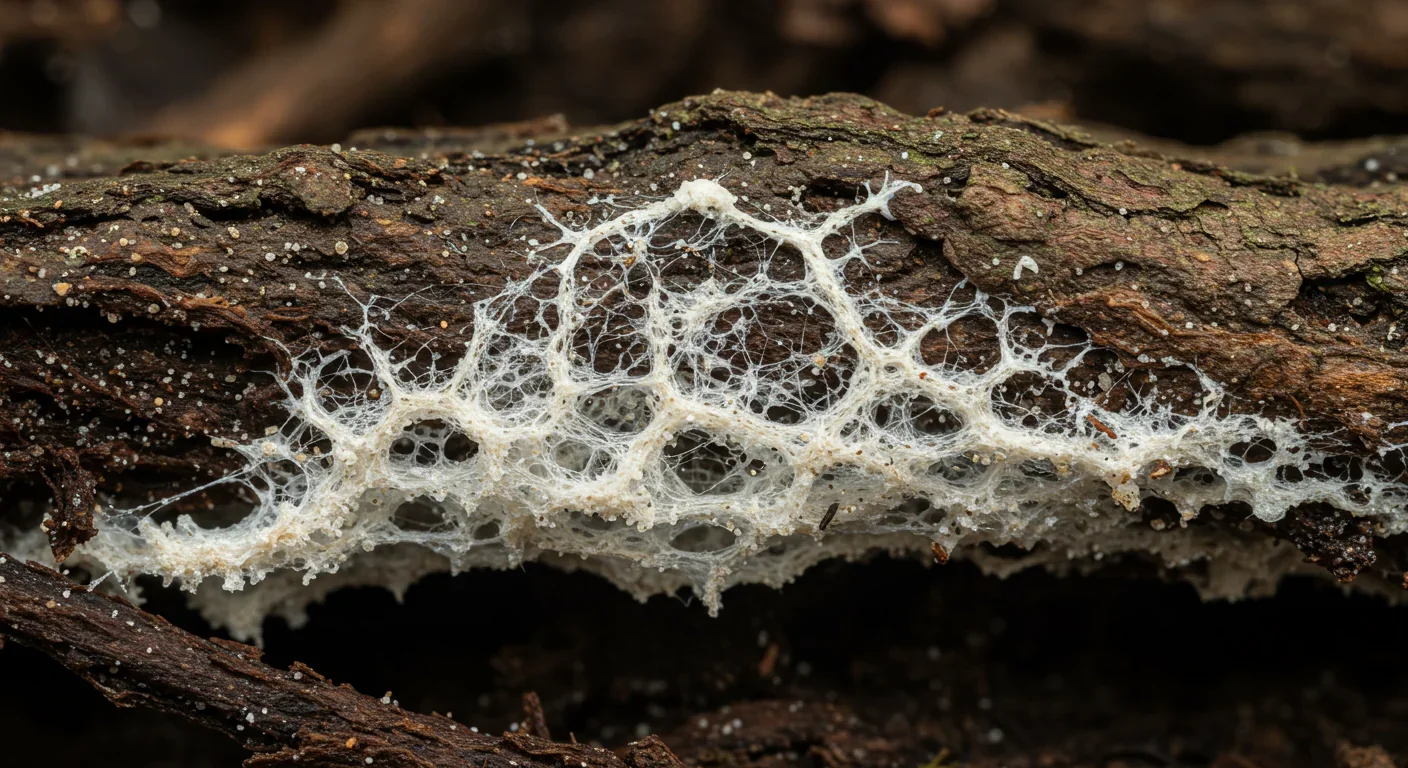
Around 400 million years ago, something revolutionary happened beneath the soil. Fungi and plants struck a deal that would reshape the planet. Scientists call it mycorrhiza—literally "fungus-root"—and it's one of evolution's most successful collaborations.
Over 90% of land plants today depend on fungal partners. The arrangement is beautifully simple: fungi extend their networks through soil, gathering phosphorus, nitrogen, and water far beyond where roots can reach. In exchange, plants share the sugars they manufacture through photosynthesis.
But calling it an exchange undersells what's really happening. Early Devonian fossils show arbuscular mycorrhizae already working with the first land plants. Without these fungal allies, plants likely couldn't have colonized land at all. The soil was too poor, the conditions too harsh, the minerals too locked away in rock.
"Without fungi, we would not exist."
— Research published in The Conversation on ancient fungal fossils
Fungi didn't just help plants adapt. They made adaptation possible.
Recent research suggests these underground networks do more than transport nutrients. They connect entire forests, allowing trees to share resources and possibly even information. A mother tree can support her offspring through fungal networks. Dying trees redistribute their nutrients to neighbors. Some scientists call it the "wood-wide web," though the name oversimplifies something we're only beginning to understand.
While mycorrhizal fungi help things grow, saprophytic fungi break everything back down. It's unglamorous work, but Earth would suffocate without it.
Consider this: every fallen leaf, every dead tree, every animal carcass—all that organic matter would just pile up forever if fungi weren't methodically disassembling it. Wood-rotting fungi appeared in Callixylon whiteanum, one of Earth's oldest trees, right when wood first evolved. The moment plants invented tough lignin to build sturdy trunks, fungi evolved enzymes to digest it.
It's almost as if life anticipated the problem and solved it simultaneously. More likely, fungi saw wood as an untapped food source and evolved to exploit it. Either way, this decomposition machinery became essential. Without it, nutrients stay locked in dead tissue, unavailable for new growth. Forests stop regenerating. Ecosystems collapse.
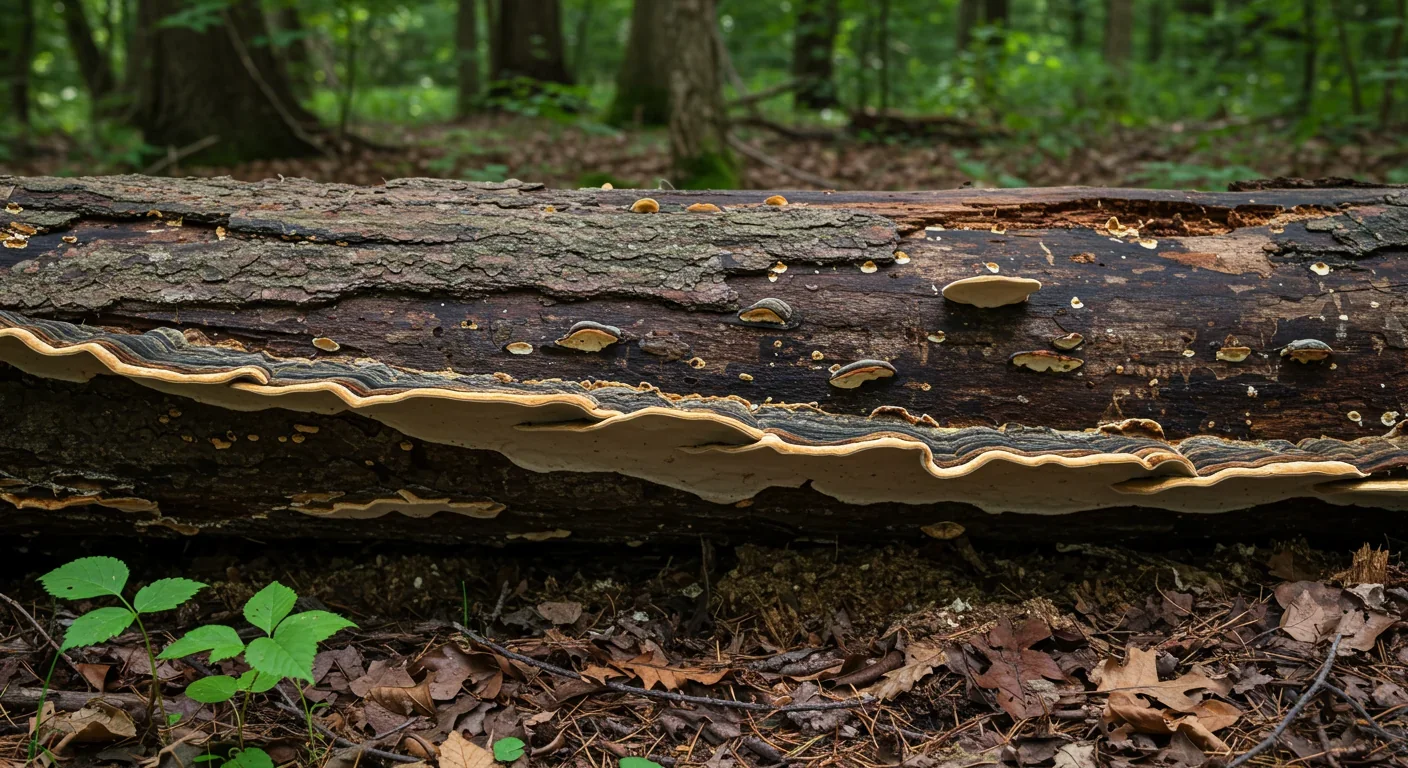
Fungi don't just recycle nutrients—they regulate the carbon cycle. When they decompose organic matter, they release CO₂ back into the atmosphere. Researchers studying fungi's role in nutrient cycling found that these organisms control the rate at which carbon flows between biomass and atmosphere, making them crucial for understanding climate change.
Think of fungi as nature's composters, chemists, and custodians all at once. They break down complex molecules that nothing else can touch, transform toxins into harmless compounds, and make nutrients available in forms plants can use. Ecosystems depend on fungi the way your body depends on a liver—you don't notice it until it stops working.
Our ancestors didn't study fungal ecology, but they definitely noticed mushrooms. Archaeological evidence shows humans have harvested, eaten, and revered fungi for millennia.
The oldest direct evidence comes from a 5,300-year-old mummy found frozen in the Alps. Ötzi the Iceman carried two species of fungus: Fomes fomentarius for starting fires and Piptoporus betulinus, which has antiparasitic properties. He didn't stumble upon these accidentally. He knew what he was carrying and why.
Throughout history, cultures worldwide developed sophisticated knowledge of fungal properties. Traditional medicine systems in China documented dozens of medicinal mushrooms, from reishi to cordyceps. Europeans used amadou fungus for centuries as tinder. Indigenous peoples across continents identified edible species, poisonous look-alikes, and mushrooms with spiritual significance.
Some mushrooms offered more than nutrition or medicine. They altered consciousness.
In 1992, ethnobotanist Terence McKenna proposed something that made scientists cringe and psychonauts rejoice: the Stoned Ape Theory. McKenna argued that psilocybin mushrooms catalyzed human cognitive evolution, triggering the rapid development of language, imagination, art, religion, and culture.
The hypothesis goes like this: Early hominids in Africa encountered psilocybin mushrooms growing in cattle dung. Low doses improved visual acuity, making hunters better at spotting prey. Medium doses increased libido and social bonding, boosting reproduction. High doses stimulated language centers in the brain, sparking the symbolic thinking that makes humans unique.
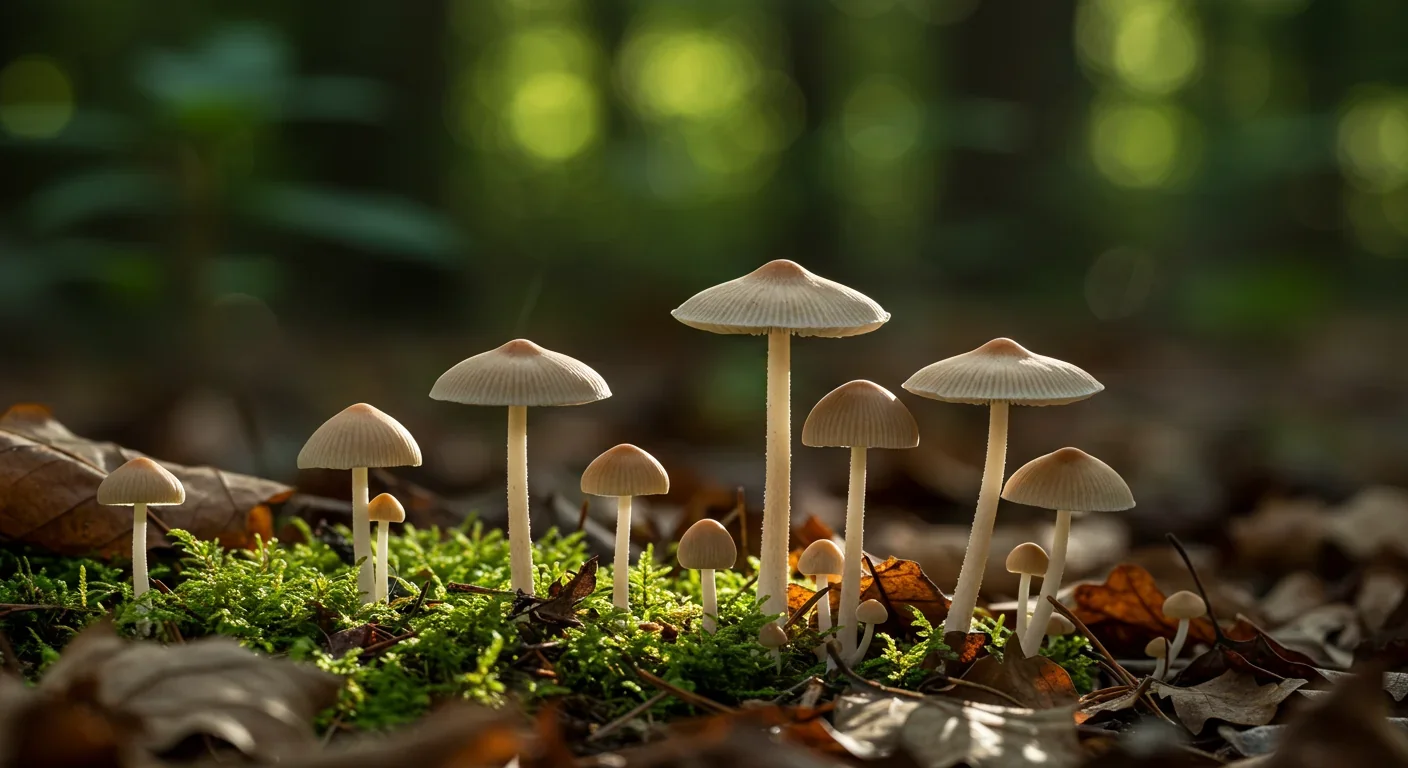
McKenna believed psilocybin was "the evolutionary catalyst" from which all human culture sprang.
Professional scientists weren't convinced. McKenna cited research by Roland Fischer from the 1960s-70s, but critics argue he misinterpreted the data. There's no fossil evidence of mushroom consumption by early hominids. The timeline doesn't quite work. And attributing all of human consciousness to a single chemical seems reductive.
The Stoned Ape Theory remains controversial, but it sparked serious scientific investigation into how psychoactive compounds shaped human culture and cognition.
Still, the theory refuses to die. Recent interest has revived debate about psychedelics and human evolution. Modern neuroscience shows psilocybin does increase connectivity between brain regions, enhance creativity, and promote neuroplasticity. Whether it shaped our species is another question entirely.
A more measured view acknowledges that psychedelics likely played some role in human cultural development without being the sole cause. Many cultures developed rituals around consciousness-altering mushrooms. These experiences influenced art, spirituality, and social structures. That's not evolution in the Darwinian sense, but it's cultural evolution.
The skeptics have a point too. Some researchers warn that we project modern psychedelic narratives onto ancient peoples who may have had entirely different relationships with these substances. Archaeological evidence for prehistoric mushroom use is surprisingly thin.
What's clear: humans and psychoactive mushrooms have a long history together. Whether that history rewired our brains or simply expanded our experiences, it's part of who we became.
Modern science is discovering that fungi might be far more sophisticated than anyone imagined. Not intelligent in the way animals are, but perhaps in ways we're only beginning to recognize.
Mycorrhizal networks can span entire forests, connecting hundreds of trees. Some networks are thousands of years old, having survived fires, droughts, and logging. They respond to environmental changes, redirect resources to stressed areas, and even seem to prioritize certain trees over others.
The language of "communication" makes mycologists uncomfortable because it implies intention. Fungi don't have brains or nervous systems. But they do process information, make decisions (in a biochemical sense), and coordinate complex behaviors across vast distances.
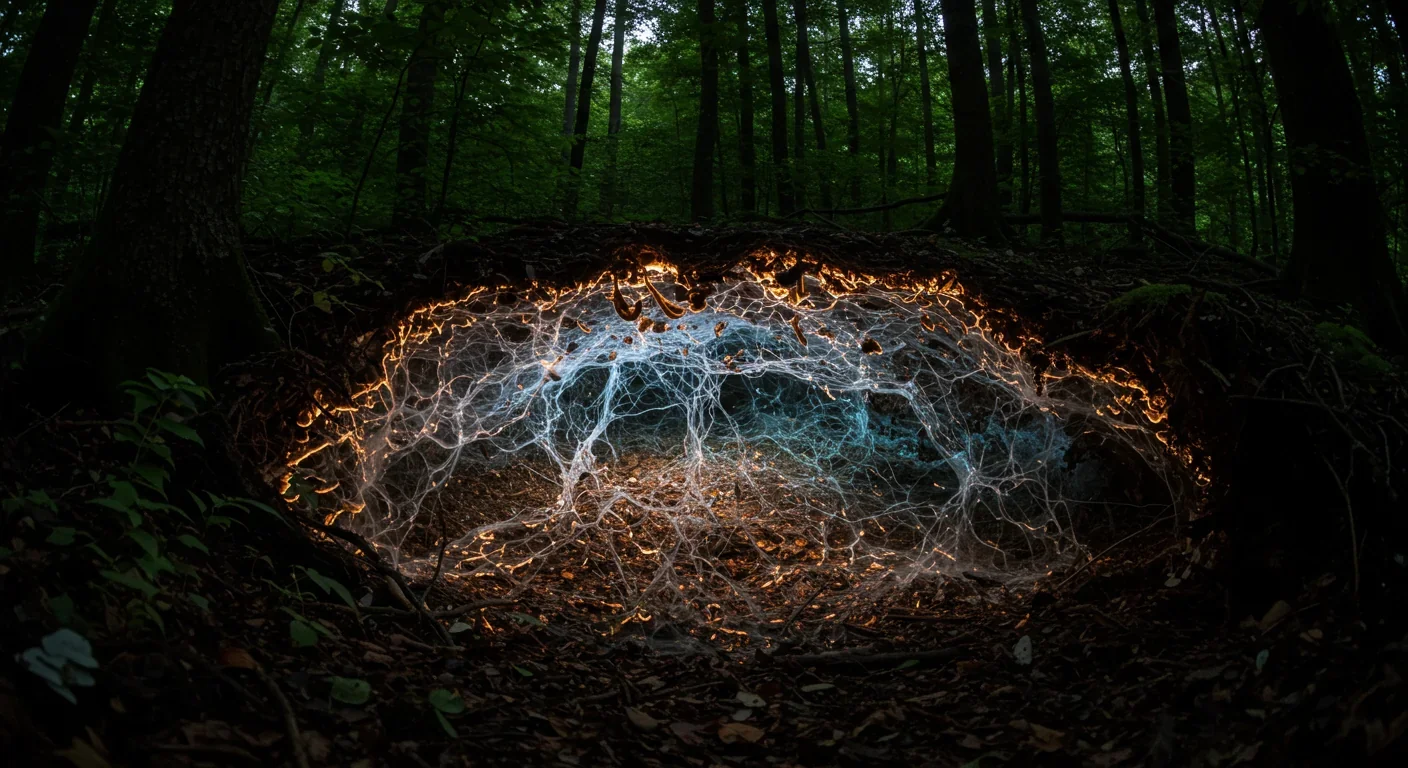
Research on fungal networks shows they can recognize kin from non-kin, allocate resources based on reciprocity, and adapt strategies when environmental conditions change. They solve the traveling salesman problem—finding efficient routes between food sources—better than computers.
Some scientists propose fungi exhibit a primitive form of cognition. Not consciousness, but something more than simple chemical reactions. They learn, remember, and anticipate in ways that blur the line between life's complexity and intelligence.
"The forest isn't just trees. It's a hybrid organism: part plant, part fungus, part something we don't have words for yet."
— Contemporary mycological understanding
This perspective shift matters. If we see fungi as active agents shaping ecosystems rather than passive decomposers, we understand forests differently. Trees aren't isolated individuals competing for resources. They're nodes in a fungal network that predates them by hundreds of millions of years.
The forest isn't just trees. It's a hybrid organism: part plant, part fungus, part something we don't have words for yet.
Understanding fungi's ancient role isn't just about rewriting history textbooks. It's about recognizing what keeps ecosystems functioning today.
Agricultural research shows that mycorrhizal fungi can reduce fertilizer needs by up to 50%, improve drought resistance, and increase crop yields. Instead of pumping fields with synthetic nutrients, farmers can partner with the same organisms that enabled plant life 400 million years ago.
Climate scientists study fungi's role in carbon sequestration. When fungi decompose organic matter slowly, carbon stays stored in soil rather than entering the atmosphere as CO₂. Managing fungal communities might be a tool for capturing carbon at scale, though we're just beginning to explore the possibilities.
Mycologists are investigating fungi for everything from sustainable materials to medical breakthroughs. Mycelium can be grown into leather substitutes, building insulation, and packaging that biodegrades in weeks. Fungal compounds show promise against cancer, depression, and neurodegenerative diseases.
We're rediscovering what ancient peoples knew intuitively: fungi are allies. They make things possible that would be impossible alone.
Fungi don't get the attention they deserve. They're not charismatic like tigers or majestic like redwoods. Most of their life happens underground, invisible to casual observation. When they do appear as mushrooms, they're often dismissed as simple plants or categorized vaguely as "neither animal nor vegetable."
But fungi are their own kingdom of life, as distinct from plants as plants are from animals. They've been evolving independently for over a billion years, developing strategies and capabilities that still surprise researchers.
One estimate suggests we've identified only 3-8% of fungal species. Millions remain undiscovered, each potentially harboring unique enzymes, compounds, or ecological strategies. The fungi we know well represent a tiny fraction of their diversity.
Every ecosystem on Earth—from rainforests to tundra, from deserts to deep oceans—hosts fungal communities we barely understand. They're woven into the fabric of life so thoroughly that removing them would unravel everything.
The story of fungi is really the story of partnership. First they partnered with geology, breaking rocks to build soil. Then with plants, enabling the colonization of continents. Then with animals and humans, providing food, medicine, and perhaps even shaping consciousness.
These partnerships aren't always harmonious. Fungal pathogens cause devastating plant diseases, destroy crops, and kill millions of people annually. The same enzymes that decompose fallen logs can destroy our lungs if fungal spores take hold. Partnership doesn't mean benevolence.
But Earth's biosphere—the living skin of our planet—exists because fungi made it possible. The oxygen you're breathing came from plants that couldn't survive without fungal partners. The soil beneath your feet is partly digested rock, processed through fungal hyphae over billions of years. The food chains supporting every terrestrial ecosystem start with fungi making nutrients available.
Without fungi, as one scientist put it, we would not exist.
That's not hyperbole. It's history verified by fossils, confirmed by modern ecology, and playing out every day in forests and fields worldwide. Fungi built the stage where life's drama unfolds.
The question isn't whether fungi shaped our world. It's what else they're capable of that we haven't discovered yet. After a billion years, they're still full of surprises.

Lunar mass drivers—electromagnetic catapults that launch cargo from the Moon without fuel—could slash space transportation costs from thousands to under $100 per kilogram. This technology would enable affordable space construction, fuel depots, and deep space missions using lunar materials, potentially operational by the 2040s.

Ancient microorganisms called archaea inhabit your gut and perform unique metabolic functions that bacteria cannot, including methane production that enhances nutrient extraction. These primordial partners may influence longevity and offer new therapeutic targets.

CAES stores excess renewable energy by compressing air in underground caverns, then releases it through turbines during peak demand. New advanced adiabatic systems achieve 70%+ efficiency, making this decades-old technology suddenly competitive for long-duration grid storage.

Human children evolved to be raised by multiple caregivers—grandparents, siblings, and community members—not just two parents. Research shows alloparenting reduces parental burnout, improves child development, and is the biological norm across cultures.

Soft corals have weaponized their symbiotic algae to produce potent chemical defenses, creating compounds with revolutionary pharmaceutical potential while reshaping our understanding of marine ecosystems facing climate change.

Generation Z is the first cohort to come of age amid a polycrisis - interconnected global failures spanning climate, economy, democracy, and health. This cascading reality is fundamentally reshaping how young people think, plan their lives, and organize for change.

Zero-trust security eliminates implicit network trust by requiring continuous verification of every access request. Organizations are rapidly adopting this architecture to address cloud computing, remote work, and sophisticated threats that rendered perimeter defenses obsolete.